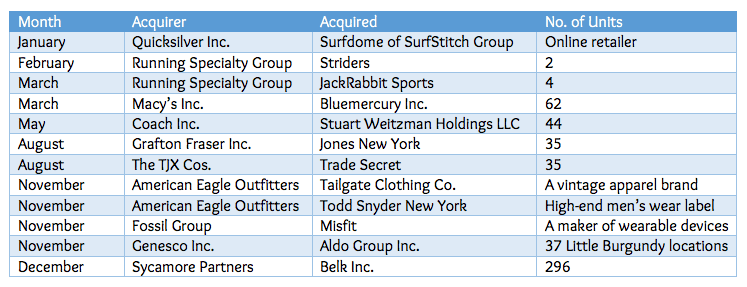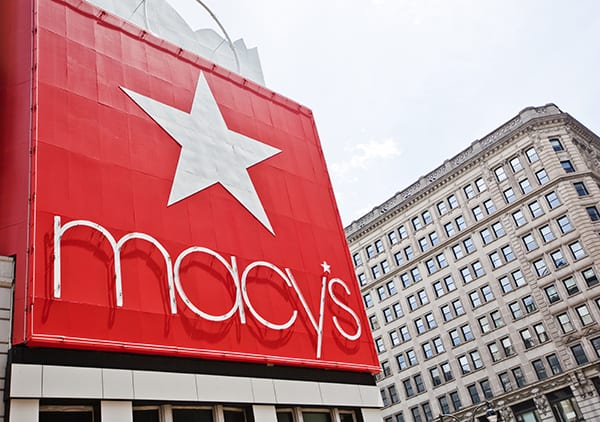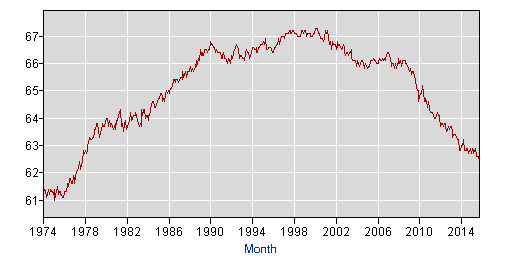 The NRF’s Big Show wrapped up on Wednesday after record attendance, and, as we unwind from an exciting week in New York, we find ourselves reflecting on the event as a whole and on the key takeaways that will impact Accelerated Analytics in 2016.
The NRF’s Big Show wrapped up on Wednesday after record attendance, and, as we unwind from an exciting week in New York, we find ourselves reflecting on the event as a whole and on the key takeaways that will impact Accelerated Analytics in 2016.
Matt Shay, President and CEO of the National Retail Federation, opened the trade group’s annual Convention and EXPO with a state-of-retail message, highlighting the event’s transformation under the strategic guidance of Shay and the NRF board.
“We’ve invested in attendee experiences, added a third day of exhibits and gained exclusive control of the entire convention center.” Shay said.
The event saw record numbers, with 35,000 people in attendance and roughly 580 exhibitors. While the convention was dominated by technology companies, both those facilitating consumer-driven change in the retail industry and those designed to help retailers replace, upgrade and modernize their systems, very few occupy the niche market of POS data and analytics. “There were about 50 companies in the Data and Analytics section of the expo, but very few that do what we do,” said Jennifer Freyer, Director of Sales and Marketing for Accelerated Analytics.
As customer expectations continue to rise, it’s imperative that vendors and retailers have access to their data – down to the item level – quickly. Accelerated Analytics is well positioned to meet that need via our one-click access to SKU/store level sales to identify trends, optimize assortments and track promotions. Plus, our forecast reports and low inventory and out of stock alerts help our clients ensure the right inventory is at the right stores.
Our visit to the Big Show also provided the opportunity to participate in several meetings with GS1, as we work with them toward standardizing POS data sharing in the retail industry. This is crucial in expanding the retailer and vendor partnership for better joint planning, store execution and sales performance.
The event returns to New York again next year, January 15-18, 2017.
 Twelve major retailers released holiday results last week confirming what was arguably one of the most unusual holiday shopping seasons in recent history. A combination of economic factors, evolving consumer behaviors and an increasingly competitive marketplace provided a challenging and unpredictable backdrop for holiday sales this year. The following are some of the most notable results.
Twelve major retailers released holiday results last week confirming what was arguably one of the most unusual holiday shopping seasons in recent history. A combination of economic factors, evolving consumer behaviors and an increasingly competitive marketplace provided a challenging and unpredictable backdrop for holiday sales this year. The following are some of the most notable results.

 With many Americans suffering from a holiday-spending hangover, it’s not surprising when we see a lull in spending in January. Coupled with abnormal weather conditions across the country and an uncertain economy, consumer spending is likely off to a slow start this month.
With many Americans suffering from a holiday-spending hangover, it’s not surprising when we see a lull in spending in January. Coupled with abnormal weather conditions across the country and an uncertain economy, consumer spending is likely off to a slow start this month. During November and December’s uncharacteristically warm weather, Macy’s same-store sales declined 4.7%. “The holiday selling season was challenging, as experienced throughout 2015 by much of the retailing industry,” said Macy’s chairman and CEO Terry Lundgren. “In the November/December period, we were particularly disadvantaged by the historically warm weather in northern climate zones where both Macy’s and Bloomingdale’s are especially well-represented. About 80% of our company’s year-over-year declines in comparable sales can be attributed to shortfalls in cold-weather goods such as coats, sweaters, boots, hats, gloves and scarves. We also continued to feel the impact of lower spending by international tourists as the value of the dollar remained strong.”
During November and December’s uncharacteristically warm weather, Macy’s same-store sales declined 4.7%. “The holiday selling season was challenging, as experienced throughout 2015 by much of the retailing industry,” said Macy’s chairman and CEO Terry Lundgren. “In the November/December period, we were particularly disadvantaged by the historically warm weather in northern climate zones where both Macy’s and Bloomingdale’s are especially well-represented. About 80% of our company’s year-over-year declines in comparable sales can be attributed to shortfalls in cold-weather goods such as coats, sweaters, boots, hats, gloves and scarves. We also continued to feel the impact of lower spending by international tourists as the value of the dollar remained strong.” Mark Twain famously said, “get your facts first, then you can distort them as you please.” As data analyst we have a responsibility to provide an accurate and complete picture when we poor through numbers and create reports. The labor report released on Friday provides a great example of an incomplete reporting of the facts.
Mark Twain famously said, “get your facts first, then you can distort them as you please.” As data analyst we have a responsibility to provide an accurate and complete picture when we poor through numbers and create reports. The labor report released on Friday provides a great example of an incomplete reporting of the facts.